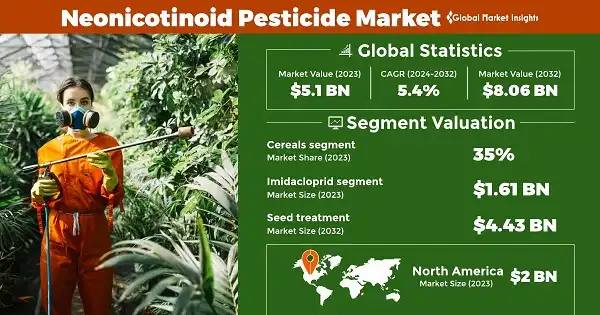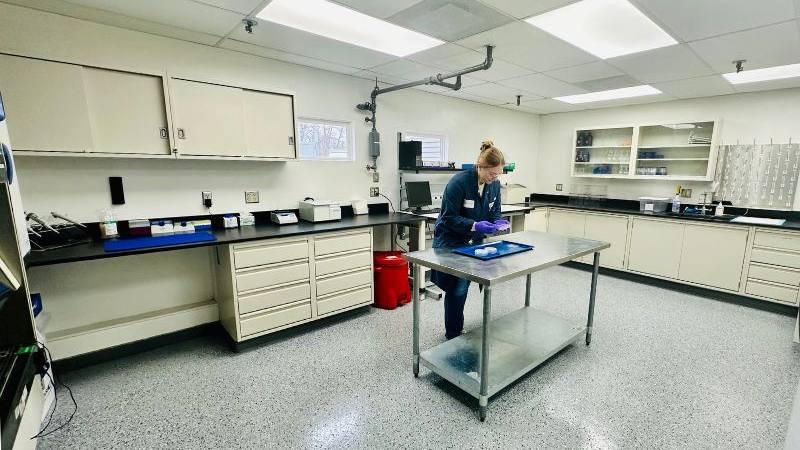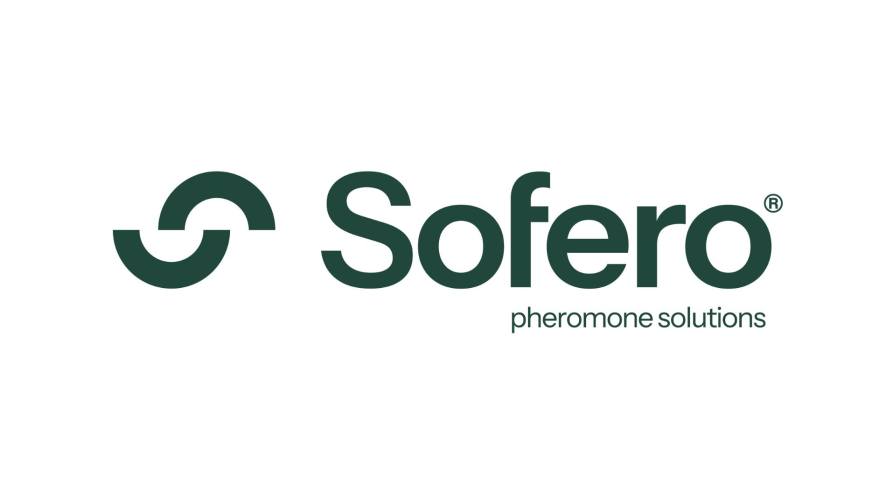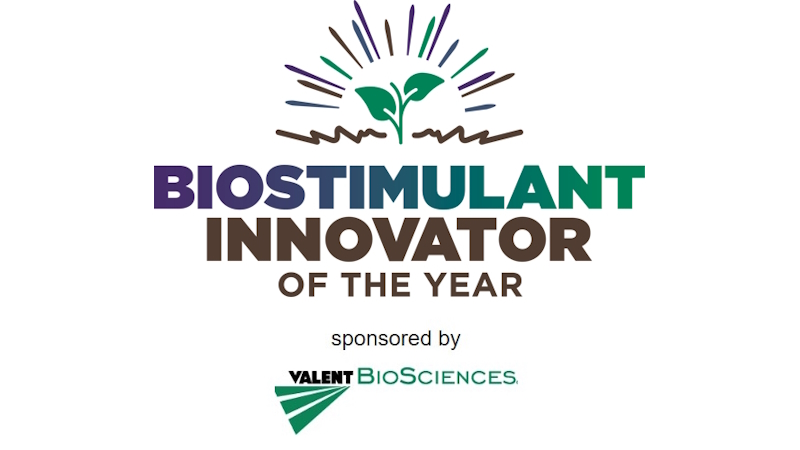Exploring the Versatile Applications of Neonicotinoid Pesticides Globally
The Neonicotinoid Pesticide Market will witness over 5.4% CAGR between 2024 and 2032 due to emergency approvals for their usage amidst agricultural challenges. Neonicotinoids, including thiamethoxam and others, are valued for their effectiveness against a broad spectrum of pests that threaten crop yields. Emergency approvals are granted in response to pest outbreaks or unforeseen agricultural crises, allowing farmers to swiftly mitigate threats and protect their crops.
For instance, in January 2024, conditional approval was granted for the use of a neonicotinoid pesticide on the 2024 sugar beet crop in England, contingent upon an independent prediction showing a virus incidence of 65% or higher. Emergency pesticide authorizations were strictly limited and issued in exceptional circumstances where there is a significant threat that cannot be managed through other feasible methods. These authorizations ensured controlled and monitored use to address imminent dangers effectively while minimizing environmental impact and ensuring public safety.
Despite controversies surrounding their environmental impact, neonicotinoids continue to be essential tools in integrated pest management strategies. Governments and regulatory bodies carefully assess and monitor their usage to balance agricultural needs with environmental concerns. As agricultural pressures intensify globally, the demand for neonicotinoids under emergency approvals underscores their critical role in ensuring food security and supporting sustainable farming practices amidst evolving challenges in pest control and crop protection.

The thiamethoxam segment will undergo rigorous development from 2024 to 2032. As a systemic insecticide, thiamethoxam provides effective control against a wide range of pests, enhancing crop yields and quality. Its systemic action allows for absorption through plant tissues, offering long-lasting protection against insects that attack various parts of plants. Despite regulatory scrutiny and environmental concerns, thiamethoxam remains a preferred choice for farmers globally, contributing to integrated pest management strategies. The market demand for thiamethoxam underscores its pivotal role in modern agricultural practices aimed at sustaining productivity and mitigating crop losses due to pest infestations.
The neonicotinoid pesticide market revenue from the oil seed segment will register a notable CAGR from 2024 to 2032. Neonicotinoids like thiamethoxam are widely used to protect oilseed crops such as soybeans, canola, and sunflowers from damaging pests like aphids and beetles. These pesticides provide systemic protection by being absorbed into the plant tissues, effectively controlling pests throughout the crop’s growth cycle. Despite environmental concerns and regulatory restrictions, neonicotinoids remain integral to oilseed crop protection strategies globally, supporting sustainable agriculture practices and ensuring optimal yields. Their efficacy in managing pest pressures continues to sustain demand in the neonicotinoid pesticide market within the oilseed sector.
Europe Neonicotinoid pesticide market will showcase a commendable CAGR from 2024 to 2032. Neonicotinoids like thiamethoxam are used to protect various crops from pests, contributing to agricultural productivity. However, concerns over their impact on pollinators have led to restrictions and regulatory controls in several European countries. Despite this, neonicotinoids remain essential for pest management in crops such as maize, oilseed rape, and cereals. The European market for neonicotinoid pesticides continues to navigate these complexities, balancing agricultural demands with environmental conservation efforts and regulatory compliance to ensure sustainable and responsible pesticide use across the continent.





